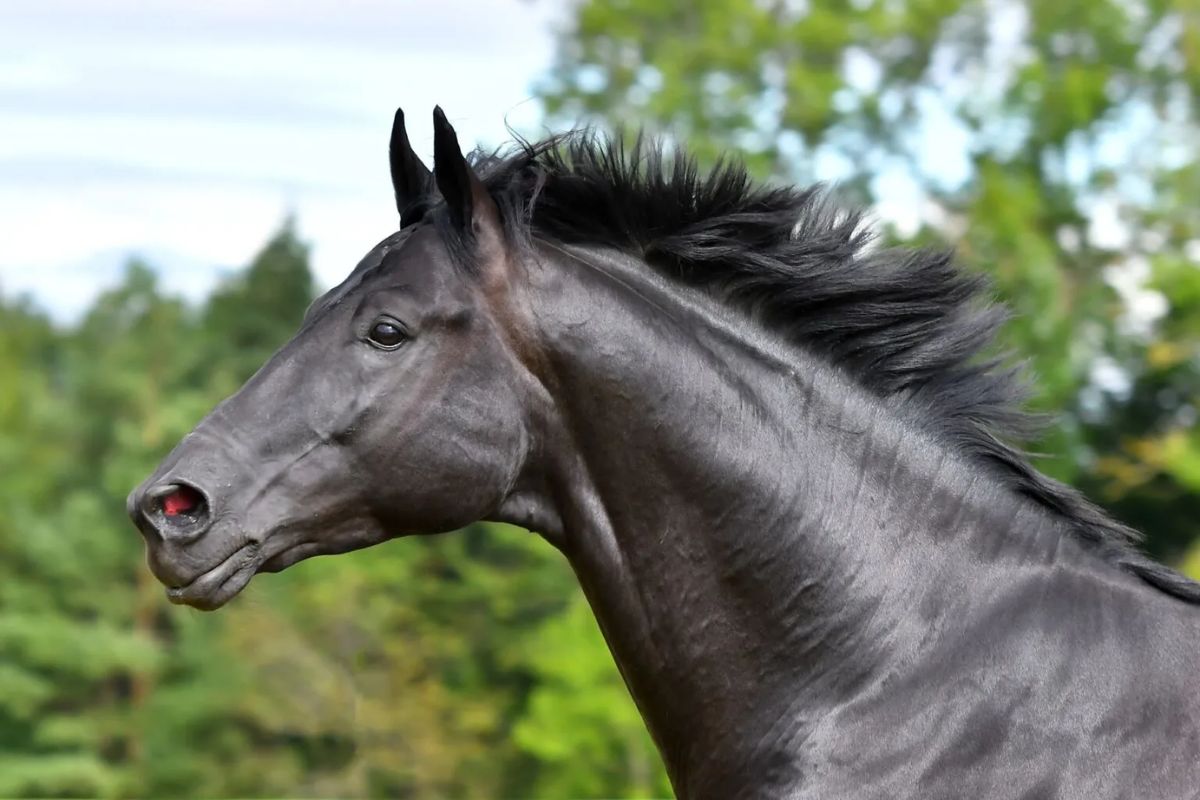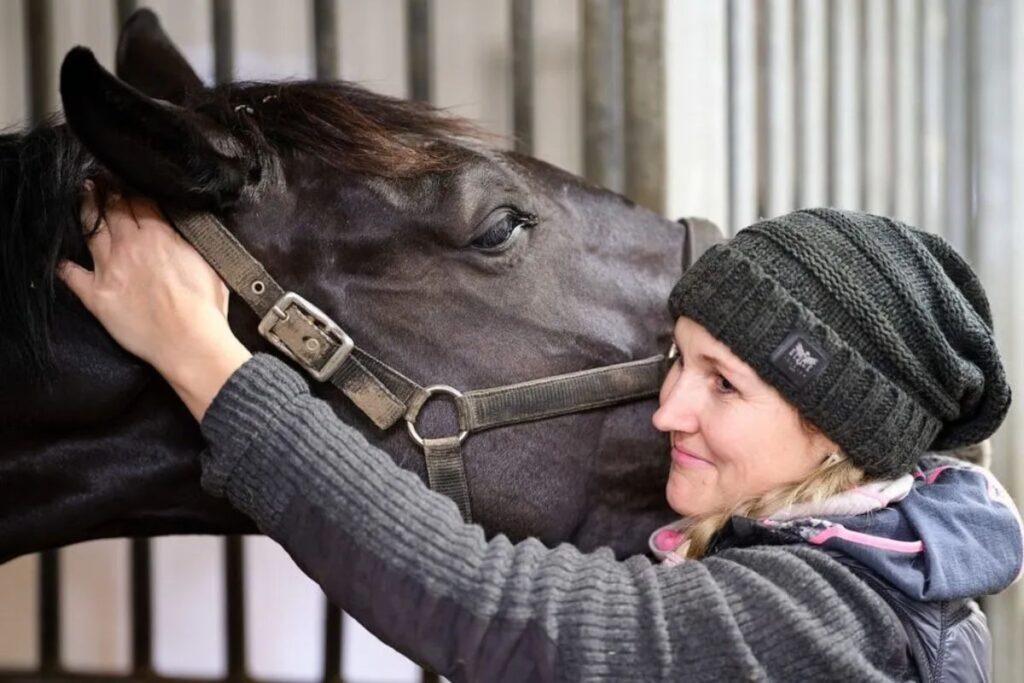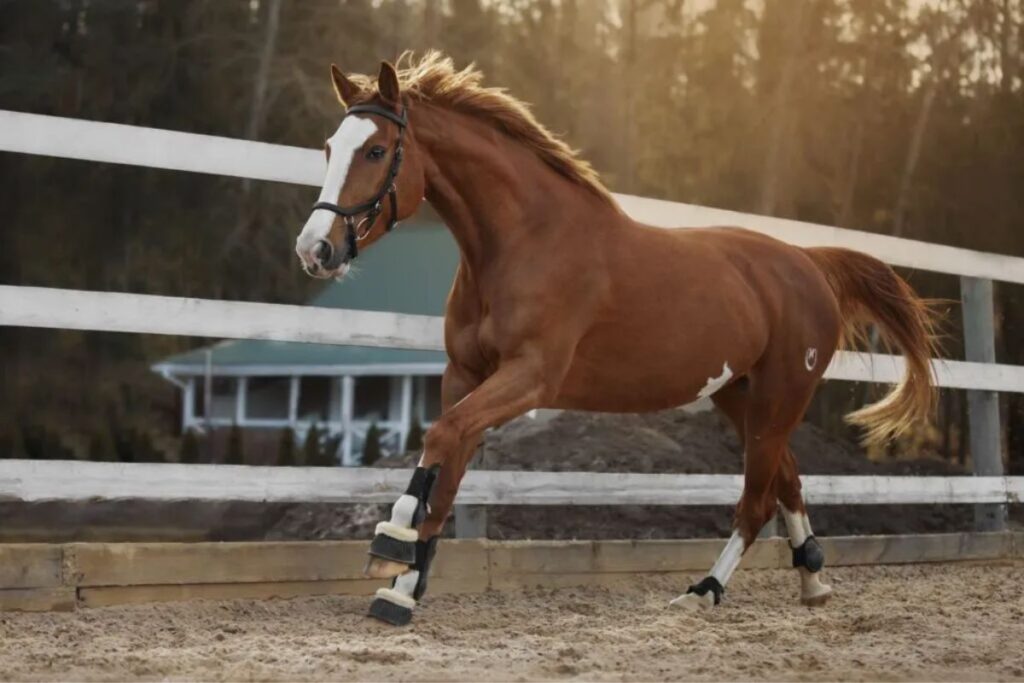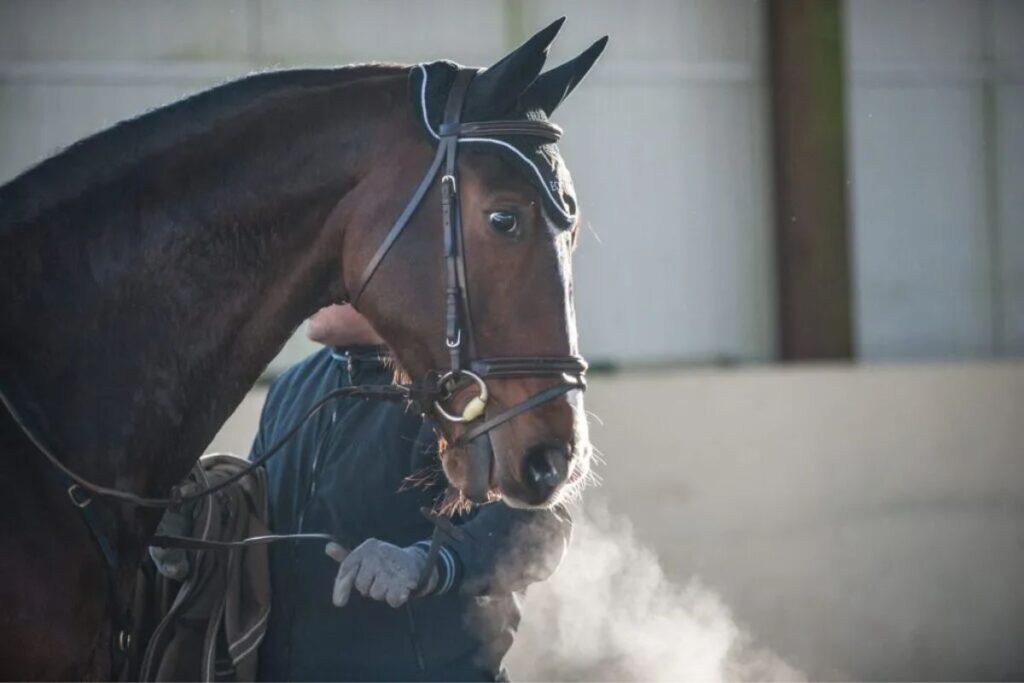Menu

Can your horse become winded? It should indeed, even when it's in the prime of its life. If it doesn't, it could signal issues with the diaphragm, which could lead to entirely different challenges in your horse's body and psyche. We have spoken to veterinarian and osteopath Bettina Købke on how it all links together.
It's rather self-evident. Good and healthy breathing is essential for the body to function. But it goes even beyond that. Proper breathing stimulates our bodies to become healthier, happier, less stressed, and filled with more energy and stamina. In addition, efficient breathing also has a positive effect on digestion and physical ailments.
The diaphragm is the largest and most crucial muscle when we talk about respiration. It's a thin muscle, separating the chest cavity from the abdominal cavity, and lies between the lungs and stomach. When the horse breathes, the organs must move outwards to make room for the lungs. The diaphragm is located between the rear thoracic vertebrae and lumbar vertebrae.
Many struggle with breathing correctly and deeply into the stomach, which includes our horses too. Breathing that's quick and shallow doesn't allow the body to operate optimally. Perhaps only the neck and chest muscles are working, while the stomach, ribs, and back don't move as they should.
"It's important that the horse breathes correctly. Whether it does so, you can notice by observing the movement around its ribs. They should be able to move outwards and inwards, and the movement should be clearly visible," explains Bettina.

Bettina often finds that superficial respiration in horses is due to the ribs not being able to move freely. This can be mistaken for the horse being in good shape and hence not becoming winded.
"All horses should be able to get winded. It's a sign of healthy mobility and balance in the body. Pay attention to whether the horse takes a deep breath after hard work or just in general," says Bettina.
Bettina Købke is a trained veterinarian, osteopath EDO, chiropractor, and German-trained rider. She runs her business, Rebalance Vet v/Bettina Købke, where she works with both horses and dogs. Bettina works with the underlying problem to restore the body's balance and not just treat symptoms.
Many horses have difficulties with breathing, and there could be several reasons for this. For instance, the diaphragm could become irritated due to tensions, impacts, twists, or stress. When this happens, the diaphragmatic muscle will contract and become rigid and inflexible.
Due to the muscle's location and attachment on the underside of the entire lumbar region, the horse's lumbar area comes under pressure because the tense muscle can't yield. This reverberates in other parts of the body. And it's very often the back that's challenged.
"Many back problems in horses can be linked to issues with the diaphragm. Therefore, one must consider the diaphragm when dealing with a horse with back problems," says Bettina.
Read also: When the connective tissue is the cause of the horse’s pain
Good blood circulation is important. It carries oxygen and nutrients throughout the body, optimizing functions in the brain, heart, lungs, muscles, and digestion.
When the diaphragm is challenged, it affects the horse's body's blood circulation. In addition to putting organs and muscles under pressure, it can also have other symptoms. An example of this is edema, which can collect in the horse's legs.

When the diaphragm doesn't function, the horse's body usually doesn't either. The body becomes inflexible and movements become stiff. The horse may, for example, have difficulty stepping under itself with its hind legs and have difficulty making lateral movements - movements that presuppose a supple and flexible body.
The reduced mobility has consequences. The horse must compensate in its body to be able to move without discomfort, and this can, for instance, lead to the horse developing an improper or skewed muscle development. Horses with a challenged diaphragm will often have overdeveloped muscles in their hind thighs.
When we are stressed, it affects how we breathe, and the same is true for horses.
"The stressed horse will hold its breath and never completely let it out. This means that the ribs are inflated and cannot give way," explains Bettina.
And it can work both ways. Problems with the diaphragm can lead to a stressed horse because it can't breathe properly. The horse will feel physically tense, and this reflects on its mental state. The horse simply becomes stressed because it cannot breathe optimally.
On the other hand, a horse that is stressed due to other reasons, such as unpleasant experiences, moving, or transport, can also face diaphragm challenges. Simply because it holds its breath due to stress and thus doesn't breathe properly. Over time, this will cause tensions that will affect the diaphragm.
Read also: Borrelia in horses: What you should know
When the horse has challenges with the diaphragm, a domino effect can occur; a vicious cycle. If the horse holds its breath and never fully exhales, it will often become tired and lack energy. It will not get enough oxygen and a chemical process in the body occurs, which among other things means that the muscles become stiff.
When the muscles become stiff, they become inflexible, and it becomes uncomfortable for the horse to move as it usually does. As mentioned, this can result in the horse inventing compensatory patterns, which in turn can create entirely different challenges.

As riders, we can contribute to wreaking havoc on the horse's diaphragm. If the horse, for example, turns its head away from you when you mount, perhaps to accept a treat, you can very easily create a manipulation of the vertebrae. One or more of the vertebrae can be displaced, and since they have a direct connection to the ribs, we can inadvertently affect the horse's ability for optimal breathing.
Bettina therefore recommends that as riders, we always ensure that the horse is looking straight ahead or towards us when we get in the saddle.
Also check out: Laminitis: Is it only the overweight horse at risk?
Just like with other physical challenges, the body adapts so it can function despite the challenges. This can result in a changed movement pattern, visibly apparent physical changes in the horse's body, or behavioral changes. Some of the symptoms of diaphragm problems are:
• The horse is stiff in its topline
• The horse cannot step under itself with its hind legs
• The horse has a flat muscle structure over the croup but overly developed muscles at the back
• The horse doesn't get winded
• The horse has a so-called 'axe chop' (a clear indent at the spot where the neck transitions into the withers)
• The horse is more lethargic than normal
• The horse develops girthiness
• The horse has difficulty with lateral movements
• The horse is stressed
Axe chop' is a term for when the horse has a clear indent right before the withers. It's not uncommon in horses, but actually, they're not supposed to look like this. The indent can arise from several different reasons. One of them can be a strong pull in the ligaments, which are located in the area around the front ribs and the lower part of the neck.
A challenged diaphragm can be helped, but according to Bettina, it can only happen with holistic treatment. One of the types of professionals trained to look at the whole picture and treat based on that are veterinarians who have continued their education as Equine Osteopath EDO®.
"You always need to check all related structures, otherwise it doesn't hold. For example, it makes no sense just to adjust the loin," Bettina explains.
In other words, it requires the right professional if the horse is to be helped with diaphragm-related issues. Someone who works holistically and is capable of assessing and treating the whole horse. Not just the superficial structures, but also deep inside the horse.
"If the organs do not lie as they should, it can also cause problems in the diaphragm as it can then move too far back in the horse," Bettina explains.
Bettina also tells us that the 3rd to 5th cervical vertebrae are related to the diaphragm. So stiffness here can also be a symptom of a problem in the diaphragm. In short: everything is connected.
EDO® stands for Equine Diplomat of Osteopathy and is equivalent to the human osteopath education. Currently, there are only four veterinarians in Denmark with this qualification. The title is trademark protected and the certification is a quality stamp showing that the professional has passed an examination. In addition, they must continuously earn points to remain certified. Osteopaths work, among other things, with organ and connective tissue techniques that are only taught at the Vluggen Institute of Equine Osteopathy.